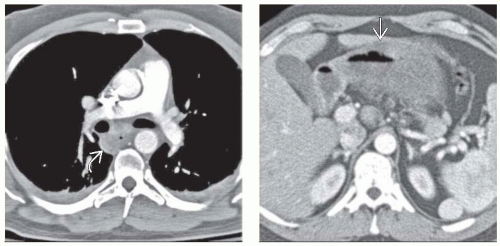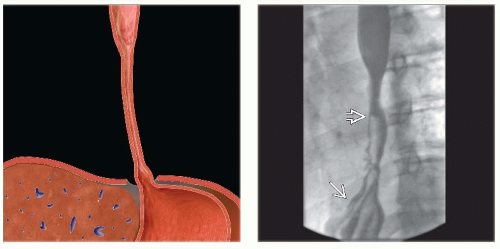Caustic Esophagitis
Michael P. Federle, MD, FACR
Key Facts
Terminology
Esophageal injury due to ingestion of strong alkali or acid
Imaging
Nondistensible, shortened, rigid segment (stricture) of esophagus with ulcerated mucosa
Accidental or intentional ingestion of caustic agents (lye > acid)
Causes mild to severe injury to upper GI tract: Esophagus > stomach > duodenum
Acute mild phase
Atonic dilated, aperistaltic esophagus
Stage 1: Acute necrotic phase (1-4 days)
Extensive ulceration and narrowed lumen with irregular contour
May have signs of perforation (gas, fluid in mediastinum)
Stage 2: Ulceration-granulation phase (5-28 days)
More defined ulcers, spasm
Stage 3: Cicatrization and scarring (3-4 weeks)
Long or short segmental strictures: Smooth, concentric, and symmetric or irregular, eccentric
Proximal part of stomach is pulled into chest by shortening of esophagus
Imaging evaluation: CECT for acute injury; barium esophagram for chronic
Top Differential Diagnoses
Radiation esophagitis
Reflux esophagitis
Esophageal carcinoma
Iatrogenic injury: Feeding tubes
Clinical Issues
Complications: Perforation, mediastinitis, peritonitis, fistulas, shock
 Get Clinical Tree app for offline access 
|






